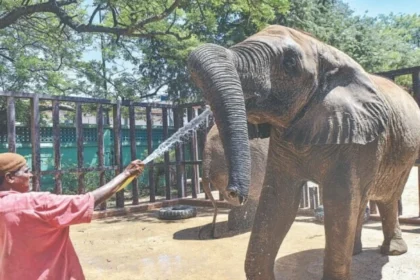In a recent move aimed at enhancing aviation safety, the Civil Aviation Authority (CAA) of Pakistan has announced that it will be conducting comprehensive inspections of Pakistan International Airlines (PIA) aircraft. This step comes in response to growing concerns about the airline’s safety standards and overall operational efficiency. The CAA’s decision is seen as a significant effort to maintain strict adherence to international safety regulations and ensure that all aircraft in PIA’s fleet are up to the required standards.
This announcement has drawn considerable attention as PIA, the country’s national carrier, has faced several challenges over the past few years. From financial woes to incidents related to aircraft safety, PIA has been under the microscope both locally and internationally. These inspections are part of broader efforts to address these issues, restore passenger confidence, and improve the airline’s reputation.
This article delves into the reasons behind the CAA’s decision, the current challenges faced by PIA, the importance of stringent safety protocols in aviation, and the potential outcomes of these inspections for the airline and its passengers.
Background: Why the CAA is Taking Action Now
The CAA’s decision to conduct extensive inspections on PIA aircraft is not an isolated event. It comes amid growing concerns from both regulatory authorities and passengers about the airline’s safety record. Over the past few years, PIA has been involved in several incidents that have raised red flags about the airline’s maintenance protocols and operational standards.
One of the most significant incidents that brought PIA under scrutiny was the tragic crash of PIA Flight PK-8303 in May 2020, which resulted in the loss of 97 lives. The crash, which occurred during an attempted landing in Karachi, was a stark reminder of the importance of strict adherence to safety regulations in the aviation industry. The investigation into the crash revealed several lapses in safety protocols and pilot training, leading to widespread criticism of PIA’s safety standards.
In addition to this, PIA has faced a series of technical issues with its fleet, including emergency landings due to engine failures and other mechanical problems. These incidents, coupled with the airline’s ongoing financial struggles, have led to a decline in passenger confidence and an urgent need for the CAA to step in and ensure that safety standards are being met.
The CAA’s decision to conduct comprehensive inspections is a proactive measure to prevent further incidents and ensure that all PIA aircraft are safe for operation. The inspections will cover various aspects of aircraft maintenance, including engine performance, avionics systems, structural integrity, and compliance with international safety regulations.
PIA’s Current Challenges
PIA has been facing a range of challenges, many of which have contributed to the need for these inspections. Financial instability, outdated aircraft, and a shrinking market share have all played a role in the airline’s struggles. Despite being the national carrier, PIA has found it difficult to compete with private and international airlines that offer more modern fleets, better customer service, and higher safety standards.
One of the key issues plaguing PIA is its aging fleet. Many of the aircraft in PIA’s fleet are several decades old, making them more prone to technical issues and requiring more frequent maintenance. While PIA has made efforts to modernize its fleet, financial constraints have made it difficult for the airline to invest in new aircraft. As a result, many of the aircraft currently in operation are outdated and require extensive maintenance to keep them airworthy.
In addition to the aging fleet, PIA has also struggled with maintenance practices. The airline’s maintenance department has faced criticism for not adhering to the strict maintenance schedules required for older aircraft. This has led to a higher number of technical issues during flights, including engine failures and electrical problems. These maintenance issues not only pose a safety risk but also result in flight delays and cancellations, further damaging the airline’s reputation.
Another challenge facing PIA is the increasing competition from private and international airlines. Over the past decade, several private airlines have emerged in Pakistan, offering better service and more reliable flights. International carriers, particularly those from the Middle East, have also increased their presence in Pakistan, offering direct flights to major destinations with modern fleets and superior safety records. This competition has put additional pressure on PIA to improve its services and safety standards.
The Importance of Aviation Safety Protocols
Aviation is one of the most heavily regulated industries in the world, and for good reason. The safety of passengers and crew is paramount, and airlines are required to adhere to strict international standards to ensure that their aircraft are safe to operate. These standards cover everything from pilot training and maintenance schedules to the design and construction of the aircraft itself.
One of the key organizations responsible for setting these standards is the International Civil Aviation Organization (ICAO). The ICAO sets global standards for aviation safety, which all airlines are required to follow. These standards are designed to ensure that aircraft are properly maintained, pilots are adequately trained, and airlines operate in a safe and responsible manner.
In addition to the ICAO, individual countries also have their own aviation regulatory bodies, such as the CAA in Pakistan. These organizations are responsible for overseeing the operations of airlines within their jurisdiction and ensuring that they comply with both national and international safety regulations.
For PIA, complying with these safety standards is not only a legal requirement but also a crucial part of maintaining passenger confidence. In an industry where safety is the top priority, any lapses in safety protocols can have serious consequences, both in terms of passenger safety and the airline’s reputation.
What the Inspections Will Involve
The comprehensive inspections announced by the CAA will be thorough and detailed, covering all aspects of aircraft maintenance and safety. These inspections are expected to focus on the following key areas:
- Engine Performance: The engine is one of the most critical components of an aircraft, and any issues with engine performance can have serious safety implications. The inspections will assess the condition of PIA’s aircraft engines, ensuring that they meet the required safety standards and are operating efficiently.
- Avionics Systems: Modern aircraft are equipped with advanced avionics systems that control everything from navigation to communication. The inspections will ensure that these systems are functioning properly and are in compliance with international safety regulations.
- Structural Integrity: The physical structure of the aircraft, including the wings, fuselage, and landing gear, will be thoroughly inspected to ensure that there are no signs of wear or damage that could compromise the safety of the aircraft.
- Compliance with Safety Regulations: The CAA will ensure that all PIA aircraft are in compliance with both national and international safety regulations. This includes checking maintenance records, ensuring that pilots and crew are properly trained, and verifying that all necessary safety equipment is on board.
These inspections are expected to take several weeks to complete, and the results will be made public once the inspections are finished. Depending on the findings, the CAA may recommend further actions, including grounding certain aircraft or requiring additional maintenance work to be completed.
Impact on PIA and Its Passengers
The CAA’s decision to conduct comprehensive inspections on PIA aircraft is likely to have a significant impact on the airline and its passengers. In the short term, these inspections may lead to flight delays and cancellations, as aircraft that do not meet the required safety standards may be temporarily grounded for maintenance. This could cause inconvenience for passengers, particularly those traveling on domestic routes, where PIA has a significant market share.
However, in the long term, these inspections are expected to have a positive impact on PIA’s safety record and reputation. By ensuring that all aircraft meet the required safety standards, the CAA is helping to restore passenger confidence in the airline. This, in turn, could lead to an increase in bookings, as passengers feel more comfortable flying with PIA.
The inspections may also provide PIA with an opportunity to identify areas where improvements can be made. For example, if the inspections reveal that certain aircraft are no longer safe to operate, PIA may be able to retire those aircraft and invest in newer, more efficient planes. This could help the airline improve its operational efficiency and reduce maintenance costs in the long run.
Additionally, the CAA’s inspections are likely to encourage PIA to improve its maintenance practices and adhere more closely to the required maintenance schedules. This could help reduce the number of technical issues experienced during flights and improve the overall reliability of the airline.
The Civil Aviation Authority’s decision to conduct comprehensive inspections of PIA aircraft is a crucial step in ensuring that the airline meets the required safety standards. With a history of technical issues and safety concerns, PIA has a lot to gain from these inspections, both in terms of improving passenger confidence and enhancing its operational efficiency. While there may be short-term disruptions for passengers, the long-term benefits of ensuring that PIA’s fleet is safe and reliable cannot be overstated.
#PIA #CAA #AviationSafety #AircraftInspections #PakistanAviation #PIAInspections #AirlineSafety #PassengerSafety #PIAAircraft #CAAInspections #AviationStandards #PakistaniAirlines #SafetyCompliance #AirlineMaintenance #FlightSafety







